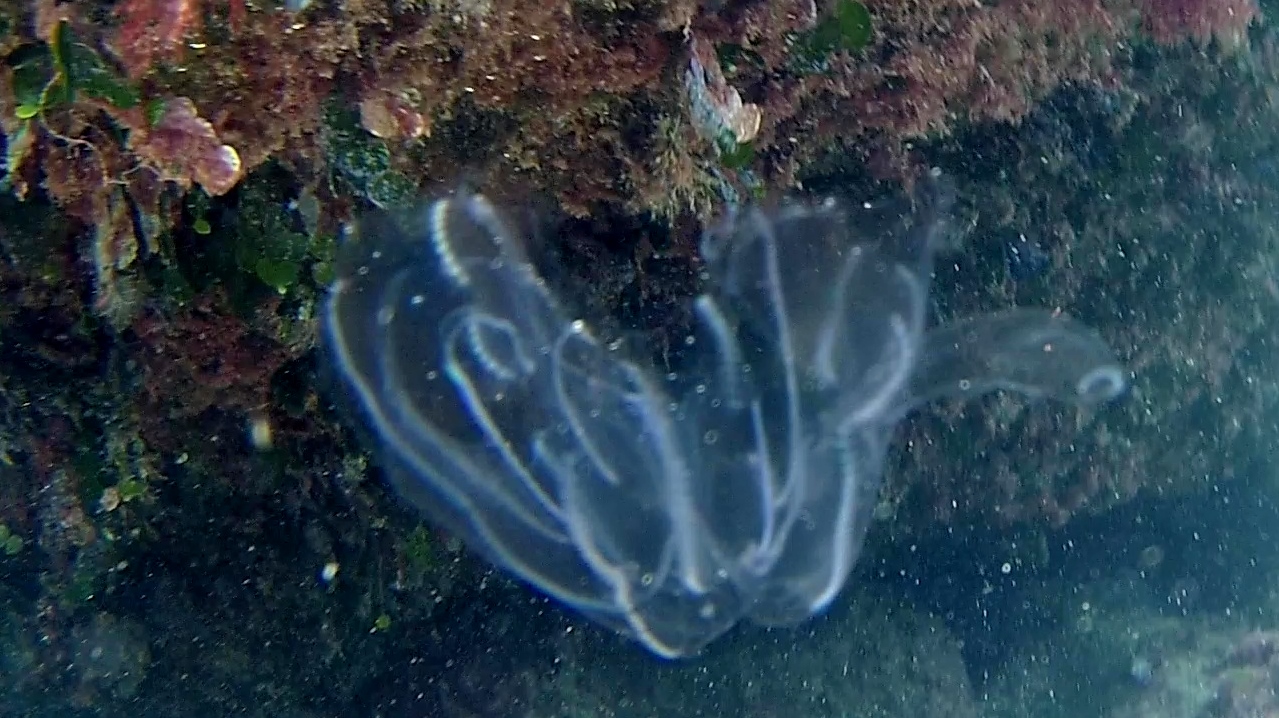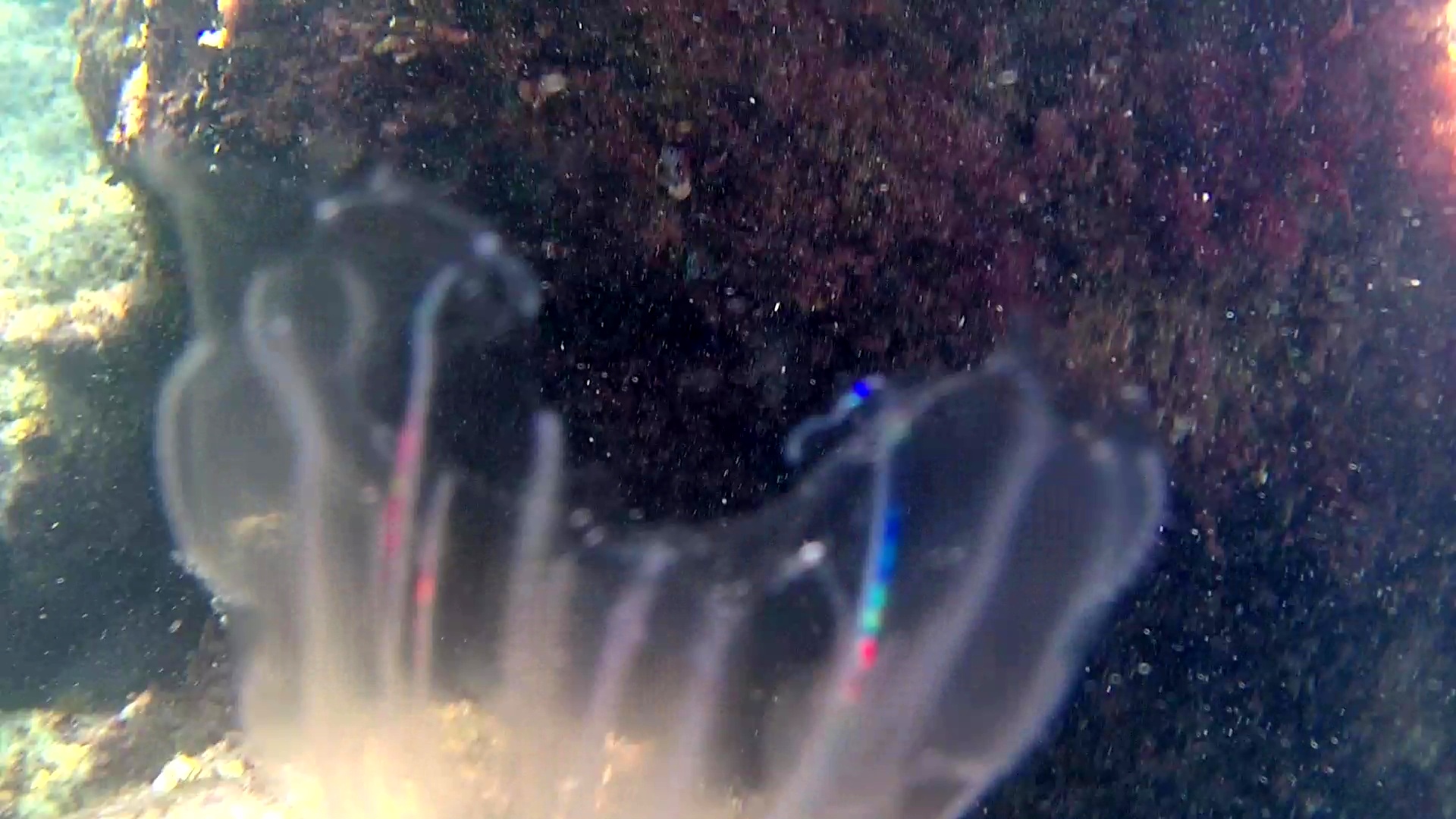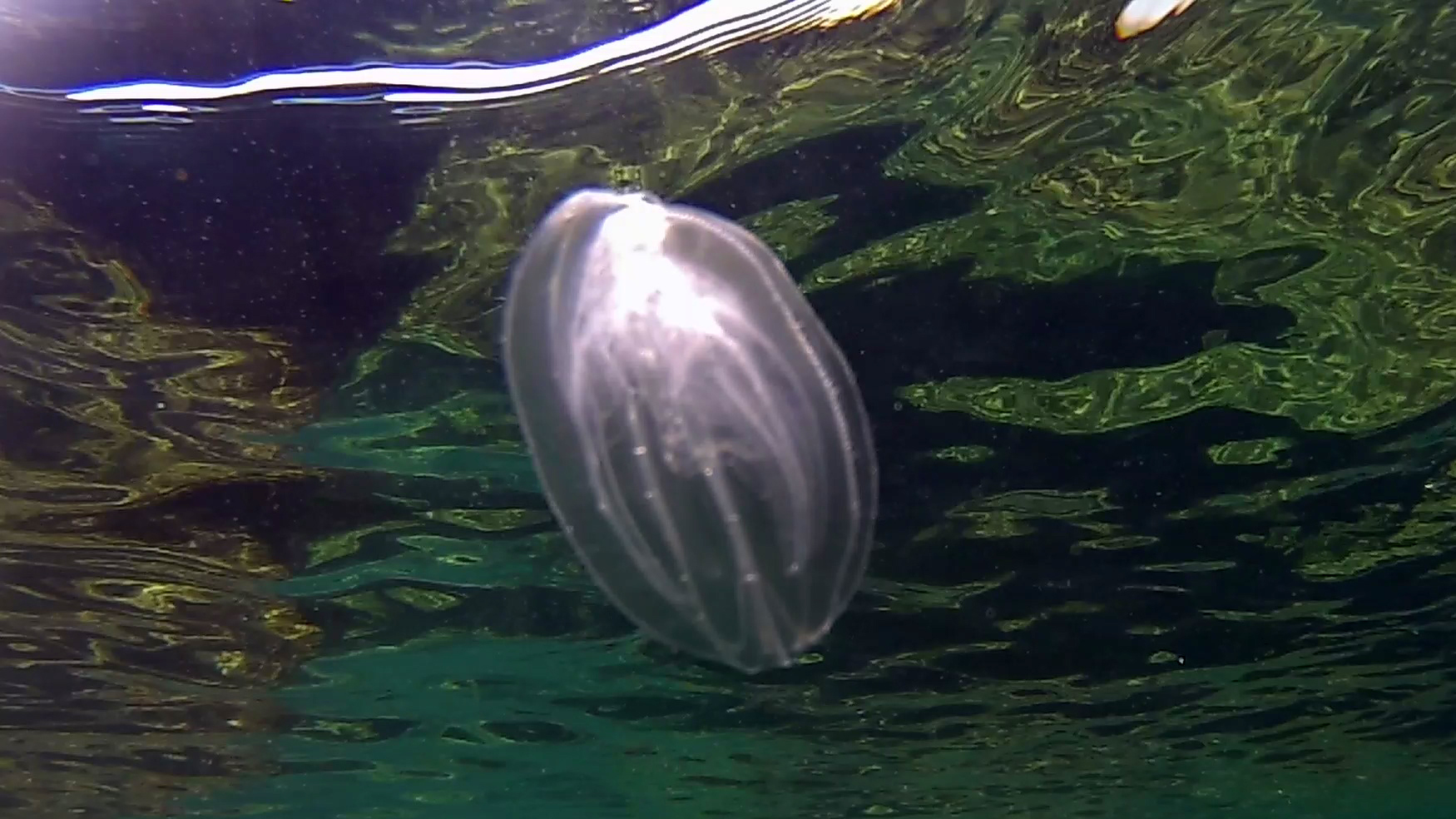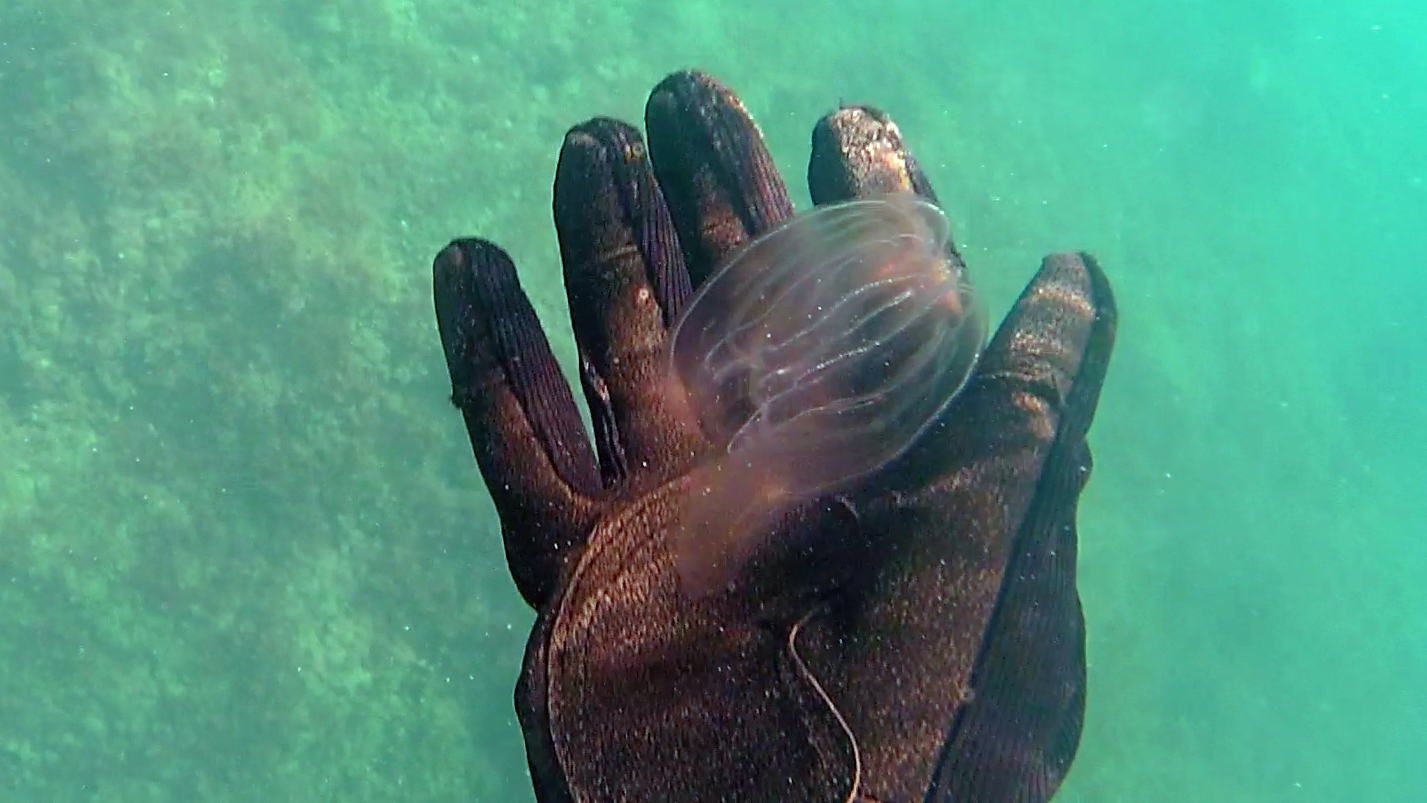Sea Walnut - Mnemiopsis leidyi
The sea walnut or warty comb jelly (Mnemiopsis A. Agassiz, 1865) is one ctenophore Bolinopsidae belonging to the family. To the genus Mnemiopsis Agassiz, 1860 belong to two species: M. gardeni and M. mccradyi, with different distribution area; the most accepted opinion, however, is that the three species are different zoological forms of M. leidyi although showing some polymorphism due to environmental adaptations. Noce di Mare Mnemiopsis leidyi Sea Walnut ctenoforo ctenophore
Description
Mnemiopsis is easily mistaken for a jellyfish because of its transparency, but it is far from it. The transparent and oval body has six lobes, two of which are evident at first sight (each large lobe alternates with two small), on which are arranged the row of ciliated combs; two rows for each major lobe and one for each small lobe.
These eyelashes shine with a blue-green light when stimulated by light or by contact. He uses its many tentacles to feed themselves, but they, unlike the cnidarians, are not stinging for man: colloblasti adhesives that are not emit any toxins that are arranged along two long and thin tentacles floating in the water. The entire body is made up to 97% water and has reduced size: about 7-12 centimeters long by 2.5 cm wide.
Habitat
It is a species native to the Atlantic introduced with the ballast water of tankers in the Black Sea, the Baltic and Caspian. By the time he also colonized other seas to reach the eastern Mediterranean.
He lives in shallow waters and eutrophic. The species are very tolerant to environmental changes (are euryhaline and euriterme) and therefore very resistant: it can develop both in estuaries of the Baltic Sea than in warm water and poor in oxygen.

Ecology
Mnemiopsis is a carnivorous animal that feeds on zooplankton, including shellfish and other Ctenophora, as well as larvae and fish eggs. Its predators are typically vertebrates, including birds and fish, but also other zooplankton, such as species of Beroe or different Scyphozoa jellyfish.
The ecological success of M. leidyi is due to its ability to use its eyelashes to generate a current that drives large volumes of water to be filtered, without his prey can notice it. This “stealth predation” is a predator of Mnemiopsis very effective generalist, which captures a wide range of microplantoniche prey (ie approximately 50 m),, of copepods (+/- 1 mm) and fish larvae (up to 3 mm or more). The efficiency and versatility of this mechanism makes the M. leidyi a destructive species and very intrusive when not controlled by its predators.
Reproduction
It is hermaphrodite, and able to self-fertilize. The gonads contain the ovaries, while spermatophores clusters are present in gastrodermis. Fertilization occurs externally, at night, with eggs and spermatophores released into the water column. The released eggs quickly develop an outer layer often after touching the salt water. In this way, they can be produced by an adult specimen also 10 thousand eggs in areas where the prey are abundant. The Mnemiopsis are fertile soon as they reach a size of about 15 mm.

Dangerousness
Mnemiopsis was included in the list of 100 of the most harmful invasive species in the world. The damage is due to its prolificacy and its diet based on zooplankton. It is calculated, for example, that his presence is causing the decline of 80% of the zooplankton of the Caspian Sea. Strong on the environment and impact on the economy has had its introduction into the Black Sea.
In other seas its impact was important, even if lower, probably due to the presence of predators or other planctofagi. Harmfulness it derived from the consequences of its development (adapts very easily to new environments, supporting large temperature variations), since the decrease of zooplankton reduces directly or indirectly to local fish populations.

The case of the Black Sea
In the Black Sea it was introduced in the eighties, and was present in the waters of one species Ctenophora, the Pleurobrachia pileus; the first recording of M. leidyi in the Black Sea date of 1982. The invasion of M. leidyi is probably begun thanks to the involuntary transportation in ballast waters of cargo ships.
In 1989, the population in the Black Sea avera reached very high levels with about 400 units per m³ of water. In the following years, due to heavy consumption of food sources, the population has decreased. In the Black Sea, the M. leidyi feed on eggs and larvae of pelagic fish, greatly reducing its population, with serious effects on the local trade in anchovies Engraulis encrasicholus which also competing for the same food resources.

Gallery
Noce di Mare Mnemiopsis leidyi Sea Walnut ctenoforo ctenophore
Video Gallery
Eccessiva Proliferazione Noci di Mare per Riscaldamento Marino
Comment (1)
Comments are closed.




Thanks, it’s quite informative